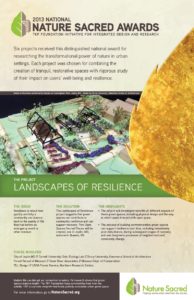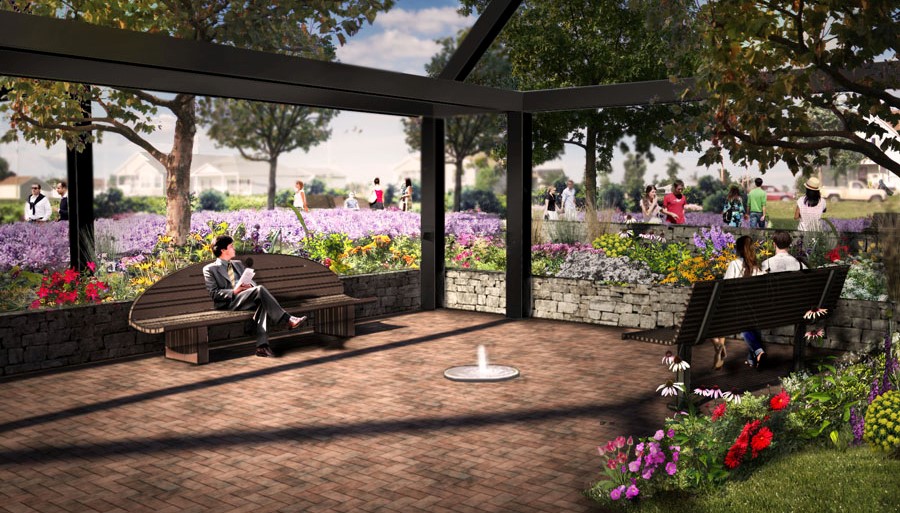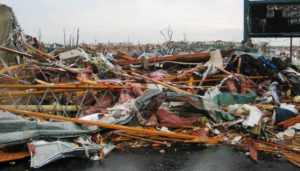Nature destroys, as it did in Joplin, Missouri on a late Sunday afternoon in May of 2011. An EF5 mile-wide tornado chewed through the city in 38 minutes.
It left 161 people dead, 1,150 others injured, countless more traumatized–and the rest of us watching and aching for them all. Aside from the human toll, it also caused billions of dollars in damages to both the built and the natural environment.Joplin was devastated. It needed to recover in every sense—physically, emotionally, spiritually. Many stories have been told in the aftermath of how the city drew together, rose up, and rebuilt.
But nature, which wrought the destruction, has also been bringing much-needed emotional recovery to the community. Nature heals too.
 For instance, Chris Cotten, head of Joplin’s Parks and Recreation Department, teamed with Cornell University’s Keith Tidball,PhD to rebuild the area’s natural and spiritual resilience by replanting the city’s trees and creating a “healing garden”.
For instance, Chris Cotten, head of Joplin’s Parks and Recreation Department, teamed with Cornell University’s Keith Tidball,PhD to rebuild the area’s natural and spiritual resilience by replanting the city’s trees and creating a “healing garden”.
With the support of the TKF Foundation to assemble a diverse team that included city officials, landscape architects, psychologists, musical therapists and urban planners–and most importantly, the community. Fusing research, design and nature—a healing garden the community named the Butterfly Garden and Overlook opened to the public in May 2014.
As former Mayor Melodee Colbert-Kean said, it’s a place where children and adults go to feel safe and whole, and to reflect. To recover. The nature effect is real. And our understanding of just how powerful its benefits are continues to grow.
Stories like this one, from Joplin, have much to teach us. Even in the hardest hit places, whether the disaster is natural or man-made, nature can heal and restore—and has the power to unify and rebuild communities in lasting ways.
“Those trees were first an indicator of the injury to the ecosystem…and later would become a springboard image as to how the community would respond,” said Dr. Tidball.
In time that imagery would also help springboard Tidball to the Landscapes of Resilience project in Joplin and Queens, N.Y., which suffered greatly from Hurricane Sandy.
Tidball’s work focuses on the interactions between people and nature, specifically how the environment can influence and strengthen restoration activity in places of crisis — in other words, help people bounce back from natural and man-made catastrophes.
Artist’s rendering of Butterfly Garden via the garden’s Facebook page.
See article in The Dirt by Alden E. Stoner.
See “Landscapes of Resilience” page on TKF Foundation website.


